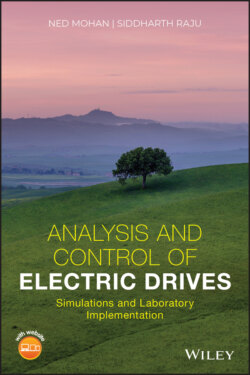Читать книгу Analysis and Control of Electric Drives - Ned Mohan - Страница 52
2‐7 Coupling Mechanisms
ОглавлениеWherever possible, it is preferable to couple the load directly to the motor, to avoid the additional cost of the coupling mechanism and the associated power losses. In practice, coupling mechanisms are often used for the following reasons:
A rotary motor is driving a load which requires linear motion.
The motors are designed to operate at higher rotational speeds (to reduce their physical size) compared to the speeds required of the mechanical loads.
The axis of rotation needs to be changed.
There are various types of coupling mechanisms. For conversion between rotary and linear motions, it is possible to use conveyor belts (belt and pulley), rack‐and‐pinion, or a lead‐screw type of arrangement. For rotary‐to‐rotary motion, various types of gear mechanisms are employed.
The coupling mechanisms have the following disadvantages:
Additional power loss.
Introduction of nonlinearity due to a phenomenon called backlash.
Wear and tear.
